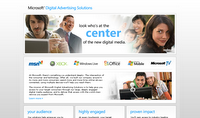
It is the right time of the year to take a look back at what we thought were going to be the trends for this ending year. McKinsey is doing it in a number of areas -- read Ten trends to watch in 2006 for all of it -- but one of them caught my attention as we discussed it many times in Marketing 2.0 -- check User Generated Content label and on Marketing 2.0.
Capitalizing on customer insights is probably the one dimension that gave Marketing in the web 2.0 era, a.k.a. Marketing 2.0, a clear paradigm shift. Read McKinsey Capitalizing on customer insights article about it. As McKinsey points out, we need to embed customer insights in the organization's key decisions from sales planning to marketing investment. It cannot remain anymore an isolated research belonging to a specific division within our marketing department.
When considering on-line marketing and customer engagement, it even becomes a real-time discipline. Yes, Marketing 2.0 is to be managed real-time, leading to a real-time business adaptation. No need here to even remind you about these newly created companies betting their full business model on this user generated content (Flickr, YouTube, ...).
Capitalizing on customer insights is no longer "nice to have" but clearly moved in the "must have" category for all of our businesses.

















